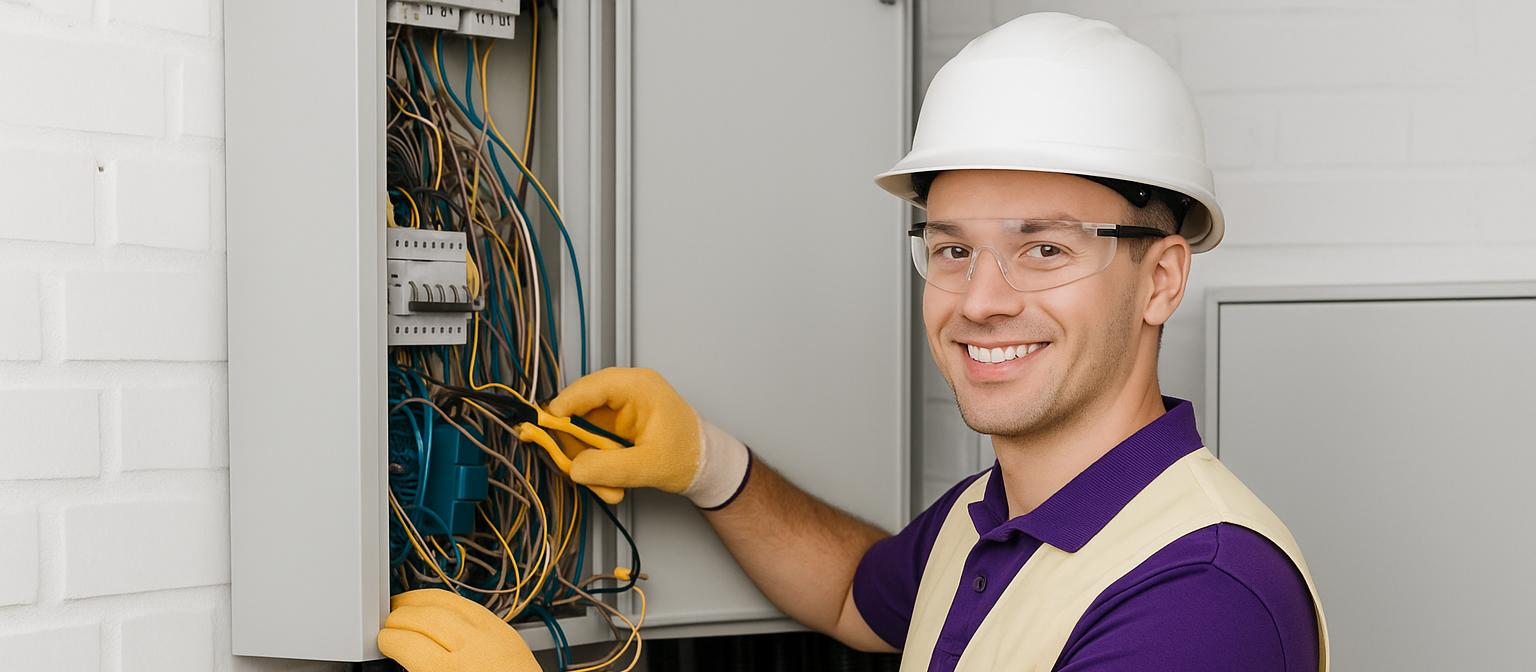Electricity keeps your home running, but when circuits are pushed beyond their limit, serious problems can occur. Electrical overloads happen when too much current flows through a circuit, causing breakers to trip or wires to overheat. Left unchecked, overloads can damage appliances, wear out wiring, and even lead to fires. By learning how to manage your home’s electrical system properly, you can prevent overloads and keep your household safe.
What Causes Electrical Overloads?
Every circuit in your home has a specific current rating usually 15 or 20 amps. When the combined power use of devices on that circuit exceeds the limit, the circuit breaker automatically shuts off to prevent overheating. Overloads commonly occur when too many high-wattage appliances like heaters, dryers, and microwaves operate simultaneously or share the same outlet. It’s not just about the number of devices plugged in, but how much electricity they draw at once.
Warning Signs of Overload Problems
- Frequent tripping of circuit breakers or blown fuses
- Flickering or dimming lights when appliances start
- Warm or discolored outlets, switches, or plugs
- Burning or metallic odors near outlets or panels
- Buzzing sounds from electrical fixtures or breaker boxes
These signs suggest your circuits are overworked. Don’t ignore them – unresolved overloads can weaken insulation, damage outlets, and increase fire risk.
Learn How Your Circuits Are Organized
The first step in preventing overloads is understanding which circuits power which parts of your home. Locate your breaker panel and label each switch correctly. Turn off one breaker at a time and see which lights or outlets lose power, then mark them clearly. Knowing what each circuit handles helps you plan appliance use strategically and avoid piling too many devices on a single line.
Distribute Electrical Usage Smartly
Once your panel is labeled, spread out your energy use. Avoid using multiple power-hungry appliances on the same circuit at once. For example, don’t run your coffee maker, toaster, and microwave at the same time in the kitchen if they share an outlet group. Likewise, avoid operating a space heater while vacuuming in the same area. Balance your load by using outlets on different circuits when running large appliances.
Use Dedicated Circuits for Major Appliances
Some appliances require a constant, high flow of electricity and should have their own dedicated circuits. This ensures they don’t interfere with other devices or cause overloads. Dedicated circuits are essential for:
- Refrigerators and freezers
- Washing machines and clothes dryers
- Ovens, stoves, and microwaves
- Dishwashers and garbage disposals
- Heating and cooling systems
If these appliances share outlets with smaller electronics, ask an electrician to install separate lines. Dedicated circuits improve safety and keep your appliances running efficiently.
Upgrade Outdated Wiring and Electrical Panels
Older homes often have electrical systems that weren’t designed for today’s energy demands. A home built decades ago might only have a 60-amp service, while modern homes typically need at least 150–200 amps. If you experience frequent trips or rely on multiple power strips, it may be time to upgrade your wiring and panel. New panels distribute power more evenly, reduce overload risks, and comply with updated safety standards.
Use Power Strips and Extension Cords Safely
Power strips add convenience but not additional electrical capacity. Plugging too many devices into a single strip can overload the circuit. Always use UL-certified surge-protected power strips, and never daisy-chain multiple strips together. Extension cords should be temporary solutions, not permanent fixtures. Choose heavy-duty cords rated for the appliance’s power draw, and avoid running cords under rugs or furniture where they can overheat.
Adopt Energy-Efficient Practices
- Switch to LED lighting to reduce overall current draw.
- Unplug devices not in use to eliminate phantom energy loss.
- Install smart plugs or timers to manage power usage automatically.
- Upgrade to energy-efficient appliances for long-term savings.
Reducing unnecessary energy consumption lessens the strain on your circuits and improves the reliability of your entire electrical system.
Keep Electrical Components in Good Condition
Loose outlets, frayed cords, and damaged plugs can create resistance and generate heat, increasing the chance of overloads. Inspect outlets and cords regularly for signs of wear or discoloration. Replace or repair anything that looks damaged, and never force plugs into outlets. Keeping your electrical components in top condition helps electricity flow smoothly and safely.
Install Protective Devices
Safety devices like Arc-Fault Circuit Interrupters (AFCIs) and Ground-Fault Circuit Interrupters (GFCIs) add extra protection against overloads and electrical hazards. AFCIs detect dangerous arcing, which can lead to fires, while GFCIs prevent shock in moisture-prone areas like kitchens, bathrooms, and outdoor spaces. Many modern breaker panels include these features automatically, but older homes can easily be retrofitted for added safety.
Plan for Future Power Needs
If you’re planning to install high-energy additions such as a home office, hot tub, or electric vehicle charger—consider your home’s overall capacity first. A licensed electrician can perform a load calculation and determine whether new circuits or a larger panel are required. Planning ahead avoids strain on your existing circuits and ensures safe power distribution.
What to Do When a Breaker Trips
- Unplug all devices on the affected circuit.
- Reset the breaker by switching it fully off and then back on.
- Reconnect devices one at a time to identify the one causing the overload.
- Move high-power appliances to a different circuit if necessary.
- If the problem continues, have a professional inspect your wiring.
When to Call a Professional
Persistent breaker trips, hot outlets, flickering lights, or buzzing noises are all signs of an overloaded or aging system. Contact a licensed electrician to inspect your wiring, check load distribution, and recommend upgrades. Regular inspections and maintenance can prevent overloads before they become serious hazards.
Conclusion
Preventing electrical overloads isn’t difficult – it’s about smart habits and regular maintenance. Know your circuits, manage power use carefully, and upgrade outdated wiring when needed. With a few simple precautions, you can keep your home powered safely, protect your appliances, and enjoy peace of mind knowing your electrical system is running at its best.

